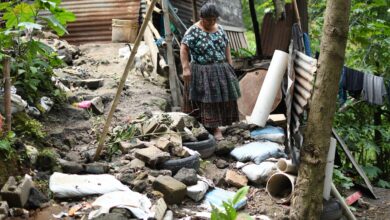Chronic Pain: Is this a Disease?
The chronic pain that affects thousands of Latin Americans has often gone unnoticed by governments and society, but the situation may change thanks to a declaration signed within the framework of the XIV Latin American Pain Congress held in Peru.

Photo: Freepik
LatinAmerican Post | Julián Andrés Pastrana Cuéllar
Listen to this article
Leer en español: Dolor crónico, ¿una enfermedad?
Pain that persists over time for more than three months is considered chronic, according to the definition of physician James C. Watson, a specialist in this condition with a high incidence worldwide. It is also classified as chronic when the pain continues for a month after the disappearance of the injury or causes that originated it, or when it is repeated intermittently for months and years. Likewise, also when it is related to injuries that do not heal or chronic diseases such as cancer, diabetes, arthritis, endometriosis, and fibromyalgia.
This condition, as expected, causes serious effects in those who suffer from it, such as tiredness, difficulty sleeping, loss of appetite and weight, and decreased sexual desire. To this is added the depression and anxiety that appear in those who suffer from the pathology, since this becomes an obstacle to carry out daily activities.
While in 2021 it was estimated that 10% of the world population had to live with this condition, in Latin America the proportion of those affected by chronic pain reached between 27% and 42%, a figure that accounts for the severity of this condition in the region. That is why it is relevant that 14 Latin American associations that work on this issue have decided to adhere to the Lima Declaration on Childhood Pain, a document that was built within the framework of the XIV Latin American Pain Congress held in the capital of Peru.
A document that claims the rights of patients with chronic pain
With this declaration, it is not only intended to urge governments to pay sufficient attention to a problem that goes unnoticed by those who do not suffer from it, but also seeks to recognize that this condition is a disease in itself.
The document also establishes a decalogue to address this disorder that encourages understanding chronic pain as a transversal pathology and not only as a symptom of another disease. It also highlights the importance of giving chronic pain a treatment that is not only medical but interdisciplinary, the above taking into account its complexity and its biopsychosocial nature.
Finally, the declaration urges the governments and health personnel of the countries of the region to adopt laws, policies and educational campaigns aimed at giving those affected with this pathology access to better treatments. Likewise, it emphasizes that health personnel update their knowledge about chronic pain in order to provide the best possible care. Although the document focuses on children and adolescents, its recommendations can be extended to the adult population suffering from this condition.
We recommend you read: ASIA Syndrome: An Autoimmune Disease that can be Caused by Breast Implants
The situation of chronic pain in Latin America
That 14 Latin American associations have accepted this declaration is of vital importance in the region, or at least that is how it can be inferred from the statistics of this condition in the region.
In Mexico, according to the Elhospital.com portal, 1 in 4 adults (27.1% of the population) report suffering from chronic pain. In the case of Colombia, cited by this same medium, around 15 million people live with this condition with a special incidence of chronic low back pain. Further south is the case of Chile, where 27% of the population faces this pathology that costs the Government a figure close to 550,000 million Chilean pesos. In Argentina, Peru, and Ecuador, similar numbers of those affected by chronic pain are reported.
It is hoped that this document signed in Lima will serve to vindicate the patients who live with chronic pain and to promote actions aimed at alleviating this often hidden problem.




